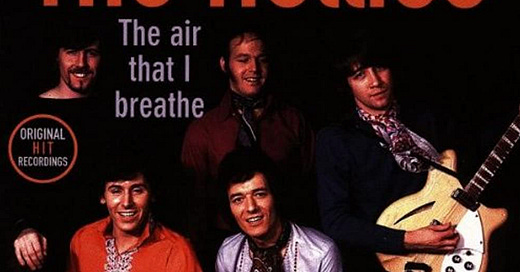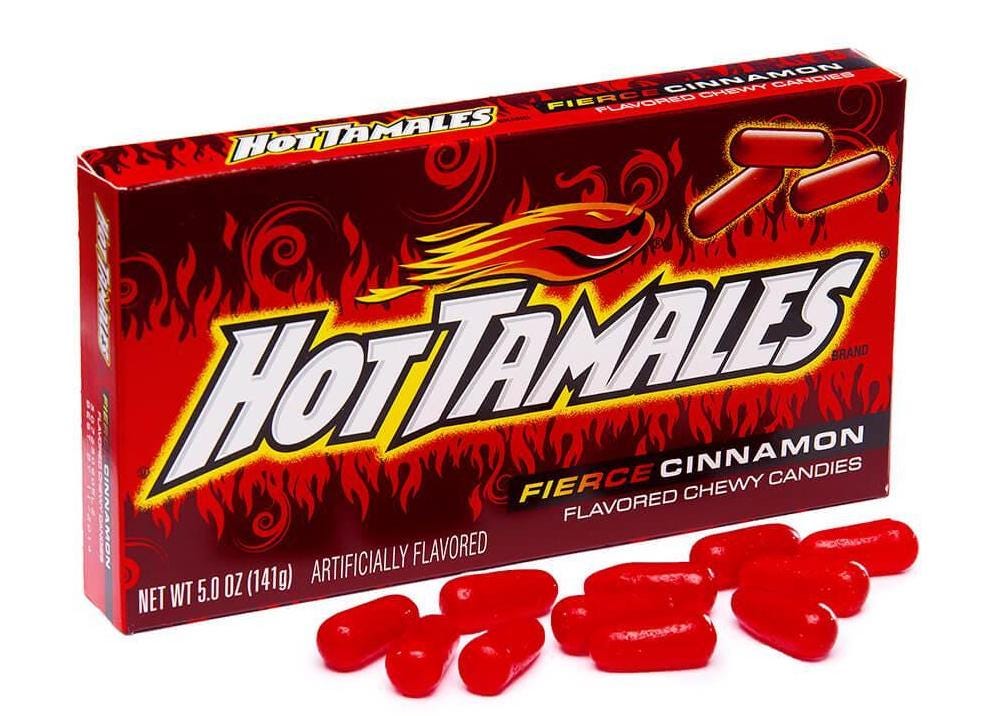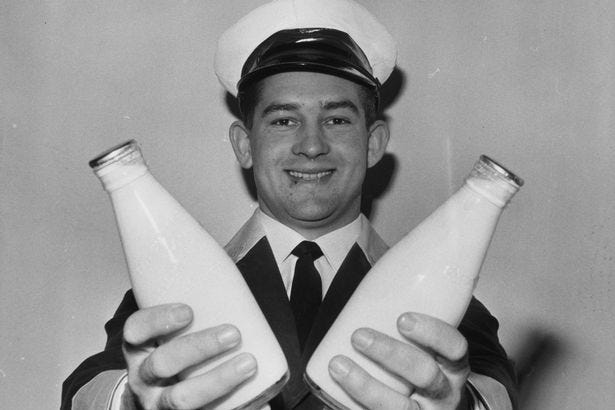The Hollies - (All I Need is) The Air That I Breathe
F*%k you allergies! My life as a mouth-breather. Part 1 of 3.
As a kid I used to always wear long pants and a thin jacket during the spring and summer seasons.
Not because my parents were afraid I would get sunburned — we lived in the San Fernando Valley (a suburb north of Los Angeles) where the average high temperature between May and November was in the mid-90s. (That’s low 30s in Celsius for you metrical folks.) Getting sunburned was a given.
No, I was covered neck to toe in fabric because I was allergic to nearly all forms of flora. Trees, grasses, flowers, shrubs — anything that grew in size, flowered or emitted pollen would turn me into a sneezing, wheezing mess.
Spring was an especially debilitating season for me. Every tree, every flower, every grass seemed to be in simultaneous bloom, casting their allergenic poisons in my direction.
When my nostrils weren’t perpetually-producing snot faucets stuck in the open position, they would clog and seal shut, creating a backup that seemingly extended into my brain.
Try this: Pinch your nostrils and try to talk. It feels like you’re talking under water, right? That’s what my voice sounded like half of each year. Some would say it still sounds like that.
Behind my thick glasses, my eyes would swell and continuously water. Each blink felt like my eyelashes were coated in molasses. It took effort and focus (no pun intended) to keep pulling them apart.
Before I would leave the house to head to school or to baseball practice, Mom would make sure all my pants and jacket pockets were locked and loaded with mini-tissue packets.
I want to say that the only allergy medicine back in the late ‘70s and early ‘80s was Benadryl. I remember taking that, but I also remember how sleepy it would make me and so I would only do so when my symptoms were especially bad. If anyone recalls another allergy medicine option available in the U.S. back then, I invite you to update me in the comments.
I suppose I should call this condition hay fever or the medical term “allergic rhinitis,“ as that more accurately defined my biggest struggle.
But according to my similarly afflicted mom, I was also allergic to non-outdoorsy things as well:
sheepherders bread
down feathers and
spicy foods.
The only one of those three that was remotely accurate was down feathers. And even that is up for debate.
When I was away at a slumber party in 8th grade I had slept in a down sleeping bag and woke up covered in hives. I ended up missing the last two weeks of my little league season because of how long it took to recover.
I spent the next decade closely checking labels on pillows and comforters and, yes, sleeping bags. And avoided both geese and ducks. Just to be safe I stopped using duck tape as well (snare-snare-crash).
I think it was in college while spending the night at my girlfriend’s apartment that I realized her comforter was made of down feathers. I did not break out into hives, my throat did not swell shut. I had slept there at least five times before I even noticed the tag.
Since then, I’ve slept with down pillows, down comforters and down sleeping bags and have never had another reaction; so clearly what I was really allergic to was slumber parties.
Looking back, I can understand why Mom would think I was allergic to spicy foods. I’ve realized that “allergic to” was often a code phrase for “don’t like.” If you are allergic to something, no one can accuse you of being finicky or a wimp. Don’t like brussel sprouts? That’s because you’re allergic to them!
Did you grow up in a household where only sweet or salty foods were served? Where bitter, savory, sour, and especially spicy flavors were not just foreign but downright scary and to be avoided like the plague? No? I envy you.
Moving away to college was a life-changing experience on a zillion levels. But one of the most profound was that I made the transition from finicky eater who hated vegetables and put ketchup on everything, to lover of a hundred different world cuisines. And, with time and careful guidance by my non-culinarily-stunted friends, I would come to appreciate heat in foods. Peppers, chilis, wasabis.
My parents couldn’t and still can’t handle anything remotely spicy. If either my mom or dad happened to so much as eat a Hot Tamale candy, their facial response would be eerily similar to that of the girl in the .gif above.
While out to dinner at Red Lobster with my parents about ten years ago, my mother ordered teriyaki salmon. When the food arrived, she took one bite, dropped her fork and spat the half-chewed bits into her napkin. “This is super spicy!” she cried out after guzzling a large glass of water and exhaling rapidly a dozen times.
Curious, I reached over, cut myself a slice and tasted her salmon. It was not spicy in the slightest. It tasted exactly like teriyaki sauce. Maybe a bit tangy, but hardly anything that could burn a mouth or make an eye water.
“Mom, it’s not spicy — it’s seasoned,” I said then tried to convince her to take another bite. Not a chance. I ended up eating her meal as well as my own while she called over our server and ordered the reliably bland spaghetti with marinara sauce.
As far as Sheepherder’s bread, that one always confused me. It’s essentially butter, sugar, flour, yeast, oil and salt — the ingredients found in most breads and the ingredients in about eighty percent of my diet for my first 19 years of life until I moved away to college and realized that vegetables weren’t always prepared boiled and unseasoned.
But I was told I was allergic to Sheepherder’s bread from a young age. Why would my mom make that up? I must have had some sort of reaction to it at some point, right?
I remember whenever I would be invited to a friend’s house for lunch or dinner and sandwiches were served, I would have to ask their parents what kind of bread they used. When I would explain that I was allergic to Sheepherders, they always responded incredulously, saying something along the lines of, “Huh, I’ve never heard of anyone being allergic to that before.”
This was before the days of gluten intolerance mind you. Or at least before it became a widely accepted food allergy.
“I guess you grew out of it,” my mom said when I mentioned not remembering ever having a bad reaction to Sheepherder’s bread. “You were definitely allergic to it though.”
Maybe the offending incident happened at a slumber party.
Far be it for me to question the woman who birthed me. Without her (and my dad too I would have to assume, no matter how many “you kinda looked like the milkman” jokes I’ve been told over the decades) you wouldn’t be reading this, so it feels wrong to imply that she may have transferred her own allergies onto her first born.
If I was the secret love-child of the milkman, would lactose intolerance be the only true food-based “allergy” I’ve ever suffered from? Thankfully, my bloat, gas and cramping have been drastically reduced due to the marvels of medicine.
I’d like to give my deepest gratitude to the Lactaid™ gods for allowing me to continue to enjoy pizza and ice cream, with only minimal gastrointestinal distress.
My Buddy Hollies (and Brad)
I think I can partially attribute this week’s earworm to my Substack buddy
who recently wrote an excellent piece all about Buddy Holly and the history behind the song “That’ll Be The Day,” as well deep dives into several amazing artists who’ve covered that classic tune.It certainly is possible that his high praise for the new Graham Nash album also played a role in The Hollies’ “The Air That I Breathe” holding court in the tennis tournament that is my mind. (I’m immersed in the French Open as I type.)
I probably don’t need to tell most of you fine readers that The Hollies were named after the bespectacled rock ‘n roll icon who sadly perished in that infamous plane crash in 1959, killing him, Richie Valens and the Big Bopper.
I also likely don’t need to explain that Graham Nash was a member and co-founder of The Hollies before he jumped ship to join David Crosby and Stephen Stills for some famous trio (and soon a quartet) whose name eludes me at the moment…😛
Nash had left The Hollies by the time “The Air That I Breathe,” off the 1974 album Hollies, became a worldwide hit, reaching #2 on the UK Singles Chart and #6 on the Billboard Hot 100.
Hollies co-founder Allan Clarke had just rejoined The Hollies prior to this album, after leaving the band in 1971 to attempt a solo career, possibly in response to Graham Nash’s success with CSN.
Did I know before researching the history of this song for this essay that no one from The Hollies actually wrote the song? Of course I didn’t.
Take it away Wikipedia Entry:
"The Air That I Breathe" is a ballad written by British-Gibraltarian singer-songwriter Albert Hammond and Mike Hazlewood, initially recorded by Hammond on his debut album, It Never Rains in Southern California (1972).[2] It was a major hit for the Hollies in early 1974, reaching number two in the UK Singles Chart.
I suppose I shouldn’t be surprised by this, as artists re-recorded and covered other artists’ songs all the time, back in the ‘60s and ‘70s especially.
Is the aforementioned Albert Hammond related to Albert Hammond Jr., the guitarist and backing vocalist for The Strokes? Why yes he is, in fact. They are father and son.
And if I keep digging, will I find out that Kevin Bacon is related to someone in the Hammond family? Yes, probably. But I have a dog to walk and I’ve already done more research than I’m comfortable with.
Is this Albert Hammond original better than The Hollies version?
And what about Olivia Newton John’s version?
More importantly, why do I feel the need to compare? Can’t they all be better? Can’t they all be the best? Why must I feel so compelled to rank things? (And you can rank them too, in the playlist below.)
That’s a can of (ear)worms I’m not going to dive into today. It is an interesting question though. Something to ponder for the coming week.
What doesn’t need to be pondered though, is the greatness of this song. If a song can be covered by so many legends, by so many artists in an array of musical genres, it proves just how brilliant a pop song “The Air That I Breathe” is.
Note: I wasn’t going to include this, as the piece is long enough, but I have to mention that Radiohead had to give Hammond and Hazlewood writer credits on their hit song “Creep.” If you are wondering how similar the two songs are, check out the video below.
Allergies, you got ‘em? How do you deal with them?
For my older readers — what else other than Benadryl was used for hay fever back in the day? Leeches?
The Hollies — friggin’ great band, amiright?
Spotify playlist above of 6 lovely versions of “The Air That I Breathe". Have a favorite?
I’m gonna have to spend some time exploring Mr. Albert Hammond’s musical oeuvre. Any suggestions?
For part 2 of the allergy chronicles, I’ll tell you how I was able to beat back the worst hay fever of my life while living on an organic farm in Western Canada.
Here’s to hoping my Canadian and Eastern U.S. friends will be getting better air to breathe ASAP.
Thanks as always for reading,
Steve











Radiohead’s Creep borrows from The Air That I Breathe and is now credited as being also co-written by Hammond & Hazlewood.
Ugh, I get allergies in March and April, but Claritin-D handles it. I think I’m allergic to tree pollen. I’ve never been tested, but it’s always right on schedule! It was real fun when COVID hit - I wanted a t-shirt that said “It’s allergies, not COVID.”
I love this song and will randomly belt out the one line “ALL I NEED IS THE AIR THAT I BREATHE and to looooove you...” -- mostly because it’s the only line I know, but also because I like to be dramatic in the direction of Bryan. 😂